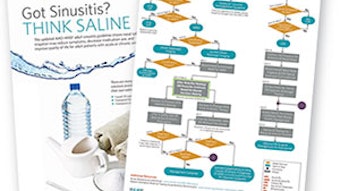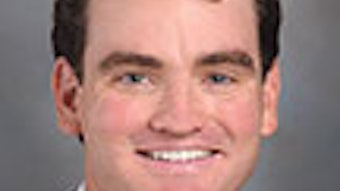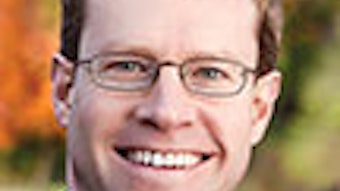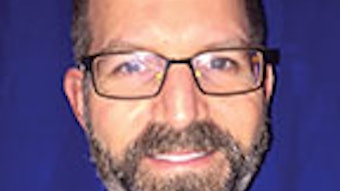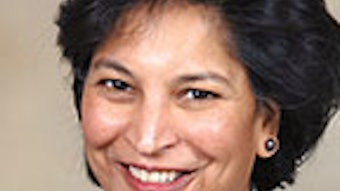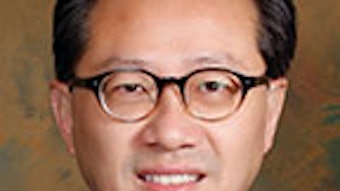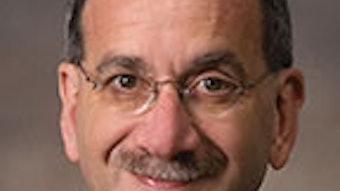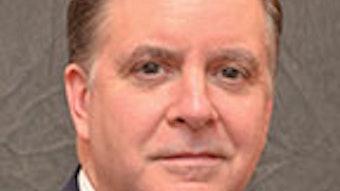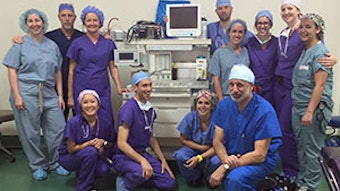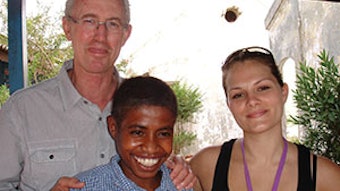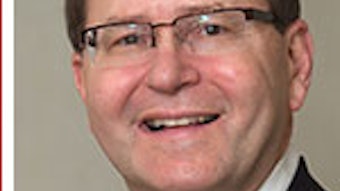Biochemopreventive strategies for head and neck cancer
The incidence of head and neck squamous cell cancer (HNSCC) is rising in a population of younger patients who may not have the typical risk factors of heavy smoking and alcohol use, but have HPV infection. This has made biochemopreventive strategies an increasingly desirable yet elusive goal.
Retinoids, COX-2 inhibitors, curcumin, green tea, and other natural compounds have been studied for their chemopreventive potential in head and neck squamous cell cancer
By Marilene B. Wang, MD, Chair, Complementary/Integrative Medicine Committee
The incidence of head and neck squamous cell cancer (HNSCC) is rising in a population of younger patients who may not have the typical risk factors of heavy smoking and alcohol use, but have HPV infection. This has made biochemopreventive strategies an increasingly desirable yet elusive goal. With a growing awareness of the significant morbidity associated with treatment of HNSCC, patients are increasingly interested in approaches to prevent development or recurrence of disease. Much has been written in the lay press regarding natural remedies, dietary supplements, and other preventive tactics for cancer, and it is essential for otolaryngologists to understand and critically appraise these various agents. In this article, some of the historic chemopreventive agents will be reviewed, and promising newer therapies will be discussed.
The retinoid compounds were the first agents studied for chemoprevention of cancers of the upper aerodigestive tract. 13-cis-retinoic acid (13-cRA or isotretinoin) has been studied extensively in cancer chemoprevention. It is a naturally occurring retinoid that has potent anti-tumor activity through conversion to its more active isomers such as all-trans-retinoic acid (ATRA) and 9-cis-retinoic acid (9 c-RA). Early studies demonstrated that high dose 13-cRA treatment for one year significantly reduced the incidence of second primary tumors in stage I-IV HNSCC patients.1 Unfortunately, a subsequent large-scale phase III clinical trial of low-dose 13-cRA in randomized stage I and II HNSCC patients failed to demonstrate a significant reduction in the development of second primary or recurrent tumors.2 Although combinations of multiple compounds such as 13-cRA, alpha-interferon, and alpha-tocopherol appeared to be promising in delaying disease recurrence, it was difficult to enroll patients in clinical trials, due to refusal of subjects to be randomized. Because of the challenges of these clinical trials, retinoids are no longer being utilized as chemopreventive agents for HNSCC, although a recent study of genetic variations from the Retinoid Second Primary Trial indicated that patients with certain genotypes had a more favorable response to 13-cRA and that stratification of patients with HNSCC may lead to more effective chemoprevention measures.3 Future trials targeting patients with specific genotypes who may exhibit a greater response to retinoids will support a personalized pharmocogenetic approach to chemoprevention.
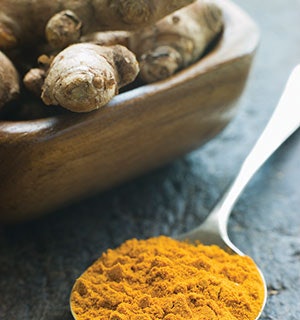
Curcumin has been shown to suppress the activation of NFκB, an inducible transcription factor that regulates the expression of genes involved in inflammation, as well as the control of cell proliferation and survival.4 Activation of NFκB is increased in many cancers, and is associated with various steps in the development of malignancy, such as expression of anti-apoptotic genes, angiogenesis, tumor promotion, and metastasis.5 Studies have demonstrated constitutive expression of NFκB in HNSCC.6
Curcumin has been studied in multiple human carcinomas including melanoma, head and neck, breast, colon, pancreatic, prostate, and ovarian cancers. The mechanisms by which curcumin exerts its anti-cancer effects are diverse, targeting many levels of regulation in the processes of cellular growth and apoptosis. Because of the multiple targets of curcumin on cell growth regulatory processes, it holds much promise as a potential chemotherapeutic agent for many human cancers. Curcumin’s inhibitory effect on carcinogenesis has been demonstrated in several animal models of various tumor types including oral cancer, mammary carcinoma, and intestinal tumors. A pilot study demonstrated inhibition of IKKβ kinase activity, a component of the NFκB cascade, as well as inhibition of proinflammatory cytokines in the saliva of oral cancer patients after treatment with curcumin.7 Further trials are necessary in head and neck cancer patients to establish the value and feasibility of curcumin as a chemopreventive agent.
Cyclooxygenase-1 and -2 (COX-1 and COX-2) play important roles in prostaglandin synthesis and chronic inflammation. COX-2 is induced by growth factors, tumor promoters, oncogenes, and carcinogens and is frequently overexpressed in HNSCC. Although preclinical studies in animal models supported the effectiveness of COX-2 inhibitors in preventing carcinogenesis, a recent randomized phase II study of celecoxib in oral premalignant lesions did not find statistically significant differences between the response rates of the different arms of the study (including placebo and differing doses of COX-2 inhibitors).8 The combination of a COX-2 inhibitor with erlotinib, a small molecule EGFR tyrosine kinase inhibitor, has shown promise in a Phase 1b clinical study, demonstrating a high rate of histologic response in patients with advanced premalignant oral lesions.9 Further clinical trials will be needed to demonstrate feasibility and efficacy of COX-2 inhibitors as chemopreventive agents for HNSCC.




Summary
Retinoids, COX-2 inhibitors, curcumin, green tea, and other natural compounds have all been studied for their chemopreventive potential in HNSCC. While some data is promising, caution must be exercised in recommending any specific agent for chemoprevention. Clinical trials do point to the significant role of dietary and lifestyle influences in cancer prevention. Smoking cessation remains the most important chemopreventive measure for patients with HNSCC, to prevent development of second primary tumors. In addition, encouragement of a healthy diet, including multiple daily servings of fruits and vegetables, as well as avoidance of alcohol, second-hand smoke, and chewing tobacco, should be emphasized for HNSCC prevention. Discussion with patients should also include careful differentiation between chemopreventive and chemotherapeutic agents for HNSCC. Sometimes promising pre-clinical data is reported in the press, and patients mistakenly believe that a new treatment for head and neck cancer has been found. While chemoprevention with natural compounds is desirable, once a cancer is diagnosed, patients should be directed toward established standard treatment protocols and clinical trials.
References
- Hong WK, Lippman SM, Itri LM, et al. Prevention of second primary tumors with isotretinoin in squamous cell carcinoma of the head and neck. N Engl J Med. 1990;323:795-801.
- Khuri FR, LeeJJ, Lippman SM, Kim ES, Cooper JS, Benner SE, et al. Randomized phase III trial of low-dose isotretinoin for prevention of second primary tumors in stage I and II head and neck cancer patients. J Natl Cancer Inst. 2006;98:441-50.
- Lee JJ, Wu X, Hildebrandt MAT, Yang H, Khuri F, Kim E, et al. Global assessment of genetic variation influencing response to retinoid chemoprevention in head and neck cancer patients. Cancer Prev Res. 2011; 4:185-93.
- Singh S, Aggarwal BB. Activation of transcription factor NFκB is suppressed by curcumin (diferuloylmethane). J Biol Chem. 1995; 270 (42): 24995-25000.
- Garg A, Aggarwal BB. Nuclear transcription factor- κB as a target for cancer drug development. Leukemia. 2002;16:1053-68.
- Wang D, Veena MS, Stevenson K, et al. Liposome-encapsulated curcumin suppresses growth of head and neck squamous cell carcinoma in vitro and in xenografts through the inhibition of nuclear factor kappaB by an AKT-independent pathway. Clin Cancer Res. 2008;14(19):6228-6236.
- Kim SG, Veena MS, Basak SK, et al. Curcumin treatment suppresses IKKβ kinase activity of salivary cells of patients with head and neck cancer: a pilot study. Clin Cancer Res. 2011 Sep 15;17(18):5953-61.
- Bertagnolli MM. Chemoprevention of colorectal cancer with cyclooxygenase-2 inhibitors: two steps forward, one step back. Lancet Oncol. 2007;8:439-43.
- Saba NF, Hurwitz SJ, Kono SA, et al. Chemoprevention of head and neck cancer with celecoxib and erlotinib: results of a phase ib and pharmacokinetic study. Cancer Prev Res. (Phila) 2014 Mar;7(3):283-91.
- Schwartz JL, Baker V, Larios E, et al. Molecular and cellular effects of green tea on oral cells of smokers: A pilot study. Mol Nutr Food Res. 2005; 49:43-51.
- Zhang X, Zhng H, Tighiouart M, et al. Synergistic inhibition of head and neck tumor growth by green tea (-)-epigallocatechin-3-gallate and EGFR tyrosine kinase inhibitor Int J Cancer. 2008; 123:1005-1014.
- Mallery SR, Tong M, Shumway BS, et al. Topical application of a mucoadhesive freeze-dried black raspberry gel induces clinical and histologic regression and reduces loss of heterozygosity events in premalignant oral intraepithelial lesions: results from a multicentered, placebo-controlled clinical trial. Clin Cancer Res. 2014 Apr 1;20(7):1910-24.
- Armstrong WB, Taylor TH, Kennedy AR, et al. Bowman birk inhibitor concentrate and oral leukoplakia: a randomized phase IIb trial. Cancer Prev Res. (Phila) 2013 May;6(5):410-8.
- Paiva M, Pileggi C, Nobile CGA, Angelillo IF. Association between fruit and vegetable consumption and oral cancer: a meta-analysis of observational studies. Am J Clin Nutr. 2006;83:1126-34.
